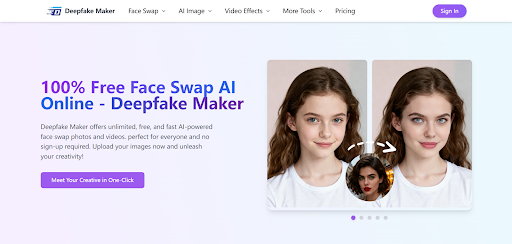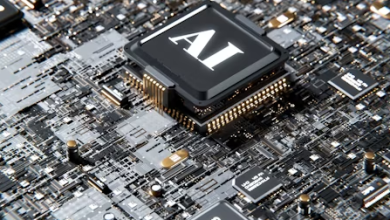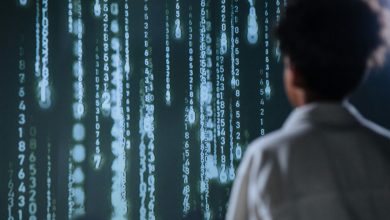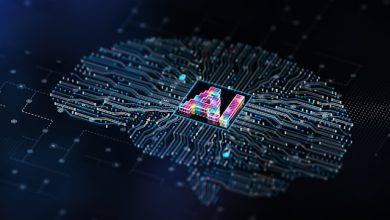
Have you ever asked yourself how a computer can create a video that looks so real yet was never actually recorded?
Many people have seen clips where faces change, voices sound identical, and actions look like they truly happened. This is the work of deepfake technology.
At its core, a deepfake maker is a positive use of artificial intelligence that helps create hyper-realistic media for entertainment, learning, and creative projects. It shows how far AI has come in understanding human features and movements.
What is Deepfake Technology
Deepfake technology is a method that uses artificial intelligence to create images, videos, and audio that look and sound realistic. It is built using algorithms that learn from thousands of samples and then generate new content that appears genuine. The name itself comes from “deep learning” and “fake,” but in reality, the focus is on simulation and creativity.
The charm of deepfake maker technology is in how natural the results look. A video can show a person speaking with accurate lip movements, or an image can combine two faces into one smooth picture. These results are so lifelike because AI systems are trained to understand human details deeply.
How AI Algorithms Make It Possible
AI algorithms, especially deep learning networks, are at the center of deepfake creation. They study countless examples of faces, voices, and movements. With this data, they can produce new media that feels authentic. The process works step by step, making sure the smallest detail, like a smile or head tilt, looks natural.
Some key steps include
- Collecting a large dataset of images or videos
- Training an AI model to study facial features and movements
- Generating new content by blending learned patterns
- Refining results with continuous adjustments for realism
This is why deepfake outputs feel smooth and believable to the eye.
Everyday Uses of Deepfake Technology
Deepfake technology is not just about science experiments. It is being used in many areas of daily life, often in creative and entertaining ways.
Entertainment and Media
In films and video production, deepfake technology helps actors appear in different roles, adjust age, or even recreate characters from the past. It saves time and allows for more creative freedom. Instead of long hours of makeup or expensive effects, AI makes the process faster.
Education and Training
Teachers and trainers are also making use of deepfake technology. They create historical figures who “speak” in lessons, making subjects more interactive. Training videos feel more real when the characters move and talk like actual people.
Social Media Fun
On social platforms, people use deepfake filters to swap faces, mimic celebrities, or create fun content. It adds humor and creativity to online sharing and helps people connect through entertainment.
The Creative Side of Deepfake
The positive side of deepfake technology shines when it comes to creativity. Artists and creators use it to express ideas in fresh ways.
Art and Storytelling
Deepfake tools are helping storytellers show characters at different ages or even mix features to create fictional people. This adds more depth to storytelling without needing complex effects.
Music and Audio Creation
In audio, deepfake technology is being used to recreate voices. Musicians and creators can generate songs with realistic vocals, experiment with styles, and try new combinations of sound.
Why Deepfake Feels So Real
The reason deepfakes look so realistic is that AI is trained to pay attention to fine details. It learns not only the shape of a face but also the way expressions change with emotions.
Facial Expressions and Movements
When a person speaks, their mouth, eyes, and eyebrows all move in sync. Deepfake algorithms capture these details so the final video looks natural.
Voice and Tone Matching
For audio, AI studies the pitch, rhythm, and style of a voice. This makes the recreated sound almost identical to the real one.
Lighting and Shadows
AI also considers how lighting falls on the face and body. This ensures that the deepfake media blends into the scene smoothly, making it difficult to tell apart from real footage.
How Deepfake Algorithms Work Step by Step
The technology may look magical, but the process follows clear steps.
- Data Collection: Large sets of photos, videos, and voices are gathered.
- Training the AI: Deep learning models study patterns and learn how features change in different situations.
- Generating Media: The AI combines what it has learned to create new content.
- Refinement: The system keeps improving by comparing results with real samples.
The combination of these steps gives us hyper-realistic media that looks natural and creative.
Benefits of Deepfake Technology
Deepfake technology brings several positive benefits when used responsibly.
- Makes films and media production faster and more flexible
- Brings history and education to life with interactive lessons
- Creates fun and creative experiences for social sharing
- Supports artists and storytellers with new tools of expression
- Provides new ways to explore music, voices, and art
The Future of Deepfake Technology
The future of deepfake technology looks bright, as it continues to improve and expand into new areas.
Real-Time Deepfakes
Soon, deepfake tools may allow real-time face and voice changes during live streams or video calls. This would open up more creative uses in communication and entertainment.
Expanding to More Fields
Deepfakes may also move into areas like fashion, advertising, and personal styling. People might preview outfits, hairstyles, or even performances with the help of realistic simulations.
Positive Impact on Society
Deepfake technology is showing a positive impact in different parts of society.
Cultural Preservation
Old photos and historical records can be brought to life with deepfakes. This helps future generations connect better with culture and history.
Inclusive Content Creation
People with different backgrounds can use deepfake tools to create content without needing large budgets. This adds more diversity to online platforms.
Entertainment Innovation
Movies, games, and shows are becoming more creative with the use of hyper-realistic AI media. This gives audiences fresh and exciting experiences.
To Wrap Up
Deepfake technology is an exciting development in artificial intelligence. By using algorithms that study faces, voices, and movements, it creates media that looks and sounds natural. From films and music to education and personal creativity, deepfakes are opening new doors for people everywhere. They make learning more interactive, entertainment more creative, and everyday sharing more fun. With continuous improvements, deepfake technology will continue to redefine how we create and enjoy hyper-realistic media in positive ways.




